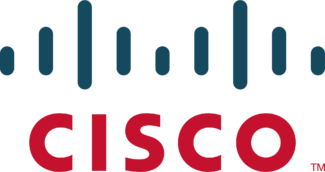An Economic Tug-of-War

Central banks are in a tug-of-war with sluggish economies around the world, but investors should not try to predict a victor. A robust portfolio designed to perform throughout the cycle is a better approach.
Contributed by Doug Walters , Max Berkovich , ,
Considering all of the headlines investors had to absorb this week, U.S. stocks were remarkably sanguine, finishing flat on the week. The Saudi oil attack, a Fed rate cut, and surprise Repo rate spike all failed to spook markets. Yet it is notable as you read our headlines from this week that they are notably downtrodden. There are two takeaways: 1) the economic cycle is maturing, and growth is harder to come by, and 2) governments and central banks are willing to do what it takes to keep growth positive. We do not subscribe to market timing and would caution investors against trying to guess who will win the battle between a slowing economy and accommodative central banks. Instead, for some portfolios, we are choosing to increase exposure to Minimum Volatility equities, which would tend to hold their value in decline better, yet should participate in the upside should central banks prevail. Advancements in investing technology now allow investors to access factor exposures like Minimum Volatility directly through exchange-traded funds (ETFs) rather than through individual stock portfolios.
Headlines This Week
The attack on Saudi oil facilities last Saturday shocked the oil markets. Worries over oil supply initially sent prices higher by over 10%.
- Thankfully, the Saudis were able to calm the markets by announcing they will repair their oil facilities sooner than initially expected. Also, President Trump called for releasing crude from the Strategic Petroleum Reserve.
- Despite volatility, oil prices finish the week higher by roughly 7%.
The overnight lending rate (also known as Repo rate) had a rocky week. This rate is primarily used by the Fed to control short-term liquidity.
- The Fed had to inject cash into the Repo market multiple time this week to get things under control.
- While there have been multiple opinions on the issue, the Fed committed to providing liquidity as needed and announced a longer date Repo operation to clear up any problems.
The U.S. Fed cut the overnight lending rate by 0.25% from 2.25% to 2.00% as expected.
- While the rate cut was as expected, there is a division amongst the Federal Open Market Committee (FOMC) members.
- Some see the U.S. economy strong with no cut needed. Others see a decline in manufacturing output, lack of long-term investments, and uncertainty surrounding trade policy warranting more stimulus. One member also called for a 0.50% rate cut.
The Bank of Japan, Swiss National Bank, and Bank of England held their rates steady.
- Japan and Switzerland’s rates are already negative.
- All three central banks have signaled more stimulus might be coming to combat a global growth slowdown and stubbornly low inflation.
India’s government is planning to cut taxes by $20 billion to stimulate its economy.
- This cut will trim their corporate tax rate to one of the lowest in Asia.
- India is hoping the tax cut will help to boost private investment, attract foreign companies, and increase job growth in the country.
The Fed cut rates another 0.25% to 2.0% as expected
The Week Ahead
The U.S. will release its third revision for Q2 Gross Domestic Product (GDP) numbers next Thursday.
- The GDP shows the value of all the goods and services purchased during the given time period.
- Early indicators point to no change from the 2% previously reported.
- A high reading is generally seen as a good sign for the U.S. Dollar.
Next Friday, the U.S. will also release its Nondefense Capital Goods Orders (excluding Aircraft) for August.
- This figure measures the cost of orders received by manufacturers for capital goods (goods expected to last for 3+ years).
- Analysts expect a 1% increase from the last release.
- Since these types of goods involve larger investments, they are sensitive to the U.S. economic situation.
A fairly light week for central banks, with New Zealand rounding out the list of recent Interest Rate decisions, with their announcement coming next Wednesday.
- Most experts believe they will hold their rates at 1.00% following the surprise cut of 0.50% at their last meeting.
- While rate decisions are limited, there will be many central bankers out facing the public and releasing minutes from their recent meetings.
Stock Highlights From Max
The Payback
This week’s action was skewed in favor of dividend-paying sectors, as central banks across the globe joined the Fed in driving interest rates lower. Outside of the yield sectors, REITs and Utilities, Energy sector was the standout. The attack on Saudi oil production spiked crude prices significantly. Industrials, Communication Services, and Financials were the laggards. Strategy related news this week include…
![]()
- Qualcomm Inc. (QCOM) claimed it achieved a significant milestone in 5G strategy this week when it completed the purchase of the remaining interest it had in RF360 Holdings. The Singapore-based joint venture with TDK corporation (TTDKY) produces front-end filters which enable Qualcomm to deliver complete 4G/5G RFFE solutions. The cost was $3.6 Billion, which is less than the company’s estimated revenue for this quarter ($4.7 Billion).

- Cisco Systems Inc. (CSCO), on the other hand, was in the news because of a deal they did not make. On the day of DataDog’s (DDOG) IPO, news came out that Cisco was willing to buy the company for more than the $7 Billion valuation the company was seeking for its IPO. But the platform for cloud applications decided to pass. The 1st day pop in stock price of 49% justified the rejection for now.


- Two big bellwethers announced dividend boosts this week. JP Morgan Chase & Co. (JPM) increased its quarterly dividend by 12.5% to $0.90. The annual dividend of $3.60 is roughly a 3% dividend yield. Investors would have to go to the 2027 maturity on the company’s bonds to get that kind of yield. Microsoft Corp. (MSFT) also moved to return its cash hoard to investors. The software giant bumped its quarterly dividend by 11% to $0.51. That was not the only move for the company. It also announced a $40 Billion share buyback plan. The company will buy back 4% of its stock, but there is no expiration to this authorization so it may take a while. So far, the company has spent over $100 Billion on share buybacks since 2010. This trend should add significant fodder to politicians call to ban buybacks!
About Strategic
Founded in 1979, Strategic is a leading investment and wealth management firm managing and advising on client assets of over $2 billion.
OverviewDisclosures
Strategic Financial Services, Inc. is a SEC-registered investment advisor. The term “registered” does not imply a certain level of skill or training. “Registered” means the company has filed the necessary documentation to maintain registration as an investment advisor with the Securities and Exchange Commission.
The information contained on this site is for informational purposes and should not be considered investment advice or a recommendation of any particular security, strategy or investment product. Every client situation is different. Strategic manages customized portfolios that seek to properly reflect the particular risk and return objectives of each individual client. The discussion of any investments is for illustrative purposes only and there is no assurance that the adviser will make any investments with the same or similar characteristics as any investments presented. The investments identified and described do not represent all of the investments purchased or sold for client accounts. Any representative investments discussed were selected based on a number of factors including recent company news or earnings release. The reader should not assume that an investment identified was or will be profitable. All investments contain risk and may lose value. There is no assurance that any investments identified will remain in client accounts at the time you receive this document.
Some of the material presented is based upon forward-looking statements, information and opinions, including descriptions of anticipated market changes and expectations of future activity. Strategic Financial Services believes that such statements, information, and opinions are based upon reasonable estimates and assumptions. However, forward-looking statements, information and opinions are inherently uncertain and actual events or results may differ materially from those reflected in the forward-looking statements. Therefore, undue reliance should not be placed on such forward-looking statements, information and opinions.
No content on this website is intended to provide tax or legal advice. You are advised to seek advice on these matters from separately retained professionals.
All index returns, unless otherwise noted, are presented as price returns and have been obtained from Bloomberg. Indices are unmanaged and cannot be purchased directly by investors.

 Doug Walters
Doug Walters